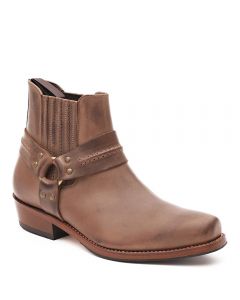- 16.08.2022
Das Problem kalter Zehen, Füße, Finger oder Hände kennen viele
Oft friert man zuerst an Händen und Füßen, obwohl einem ansonsten ganz warm ist. Sollen Ihre Füße warm bleiben, reicht es nicht, sich auf diese zu konzentrieren. Warme Füße sind eine Sache des ganzen Körpers. Wird der Körper kalt, versorgt er vorrangig Herz, Gehirn und andere lebenswichtige Organe mit Wärme. Der Blutfluss zu Händen und Füßen nimmt dagegen ab.
1) Keep your body warm by wearing a hat
To avoid freezing to your feet, it is therefore important that you are also properly dressed on the rest of your body. A head without a hat acts like a chimney from which most of the body heat escapes.
2) Don't forget to eat and drink
The body needs energy to maintain its heat balance. So don't forget to eat and drink enough. You don't necessarily need warm drinks to stay warm. The important thing is that food and drink are energy-rich.
Do not let your body heat escape.
Shoes serve to keep out the cold and prevent the heat produced by the body from escaping. They must protect your feet from the cold, wet and wind. If possible, shoes should also be able to wick moisture away from the foot. They must ensure stability, have a good fit and must not chafe. The multi-layer principle is an effective way of dressing for cold climates. It makes it easier to wick moisture away from the skin. The different layers also trap air, which insulates body heat. With the multi-layer principle, you are flexible and well protected from the cold, wind and wet. What applies to the body as a whole naturally also applies to your feet, hands and head.
3) Wear two pairs of socks
The multi-layer principle also applies to socks: wear a thin, well-fitting sock directly on your foot. Wear a thicker sock on top to wick moisture away from the foot and trap as much air as possible. This way you also avoid blisters on your feet, as the friction is between the socks and not on the skin.
4) Do not dissipate heat
Much of the heat from your feet is transferred to a cold surface. It is therefore important that the distance to the cold ground is as great as possible. Make sure that your shoes are worn until there is a balance between the inside and outside. Socks with a high cotton content prevent foot perspiration from escaping. Conclusion: The foot first gets damp, then cold. an insulating insole, preferably made of wool. And it is best to stand on a mat, a piece of frigolite or brushwood so that the heat is not conducted into the cold ground.
Make sure your feet are dry. Wet feet quickly turn into cold feet. During light activities, the foot secretes approx. 3 g of moisture per hour. During hard work, sweat can be secreted at a rate of up to 30 g or more per hour. To prevent your feet from freezing in cold weather, they must above all be dry. This requires effective drainage of moisture, as water is a 25 times better conductor of heat than air. If your feet are damp, you are bound to lose a considerable amount of heat.
5) Wear the right socks.
To avoid cold feet, they must above all remain dry. Therefore, wear socks made of moisture-wicking material, e.g. wool. Wool also has an excellent absorption capacity. It can absorb up to 30% of its own weight in moisture without feeling damp. Damp wool even gives off a little extra heat, absorption heat.
6) Change your socks frequently
Change your socks just before you go outside in the cold. Otherwise, the heat in the house could mean that your socks are already too warm and damp. Always take a pair of clean and dry socks with you to change and change several times a day.
7) Dry your socks when they are damp
Use your body heat to get your damp socks warm and dry. To do this, tuck the socks into your waistband when you are on the move. The body heat will dry them automatically.
Ventilate more. There is often a connection between cold feet and inadequate ventilation. The material of socks, shoes and boots is usually too tight, so that only a small amount of moisture can escape through the shoe as vapor. In such a case, the footwear acts as a moisture barrier.
8) Wicking away moisture with wool
If the moisture content between the foot and sock is higher than that on the outside of the sock, wool starts to "work", absorbing the moisture and transporting it away from the foot through the material.




9) Take off your shoes
Take your shoes off when you take a break. This allows the moisture in the shoe to escape through the upper. Think about blood circulation. If the blood flow to the feet is obstructed for any reason, they will cool down quickly. Be careful! If you notice that your toes are slowly becoming numb, this could be a sign that frostbite is beginning.
10) Make sure there is enough room in your shoes
It is important that your shoes are big enough and not too tightly laced. If the shoes are too tight, blood circulation will be impeded and your feet will quickly become cold. The shoes must be big enough to allow you to move your toes.
11) Keep your toes and feet constantly moving
Moving your toes and feet stimulates blood circulation, increases the temperature and reduces the risk of local frostbite.
12) Take care of your feet
Taking care of your feet is very important. Clean and dry feet promote blood circulation, are better able to keep out the cold and protect against blisters. Do not use water-based foot cream, as the water contained in the cream can freeze at low temperatures and lead to frostbite.
13) Move!
Change country, to Andalusia or Sicily. The south is nice and warm anyway and the winter is shorter.






